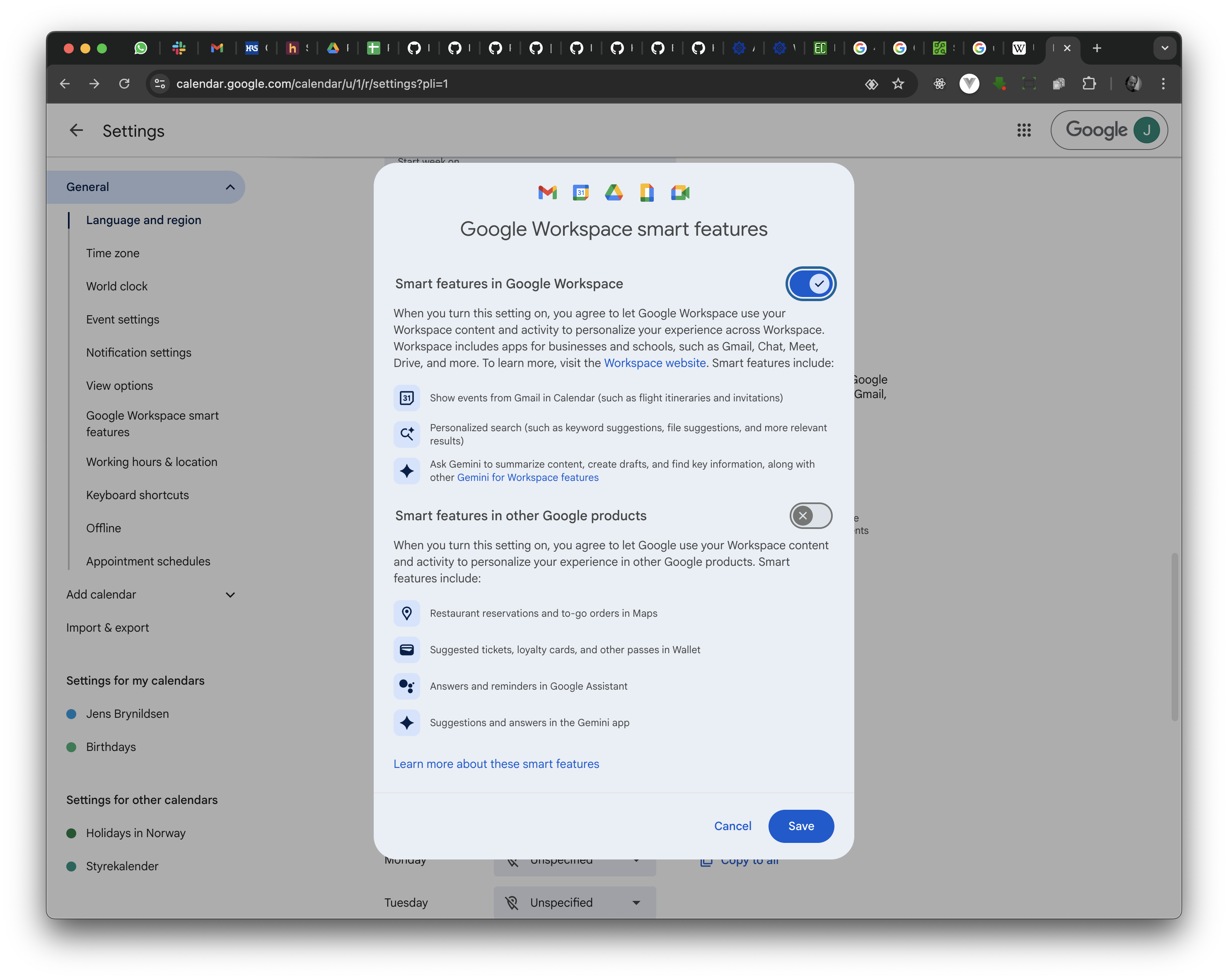Not so Smart Features from Google
09 November 2025 at 2:33 pm

I recently got a new kind of spam - entries added automatically to my calendar - without me ever doing anything. Here's how to fix it.
Suddenly a calendar notification popped up claiming that I should pay something? Digging into it I found that at some point, Google started adding “Smart Features” that are turned on by default. This is how it looked:

As you can see, there is a feature to mark invitations as Spam, but that doesn't really solve the problem, does it? The fact that Google allows anyone to invite up to 200 random persons to anything is concerning also. Adding things automatically CAN be a neat feature, but why on earth would Google enable adding entries from anyone by default? Not nice at all.
But how was this even allowed in the first thing? There's two things you need to do to solve this. Start by going to the web version of Google Calendar. Then press the cogwheel at the top to get to the Settings page.

Click or scroll to the "Google Workspace smart features" option. Click the button “Manage Workspace smart feature settings”. Note that this also (likely) stops Gemini from automatically accessing your personal information - an added benefit. To stop spam entries from being added, you need to turn off the "Smart features in Google Workspace" option. And there's another setting as well:

Automatic adding can be neat - if you already know the sender, so scroll to the other options controlling this and set it to “Only if the sender is known”. This should obviously be the default, but “From everyone” is selected by default.